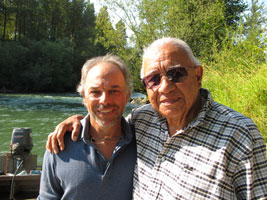
Carl Safina with Nisqually tribal leader, Billy Frank
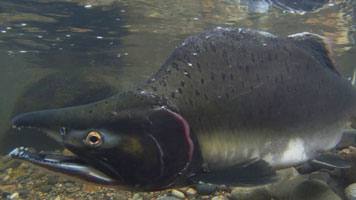
Male pink salmon on spawning grounds of the Mashel River, a tributary to the Nisqually River
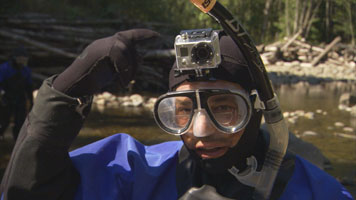
Carl Safina about to join a river survey of young salmon, points to a miniature video camera that will show his point of view
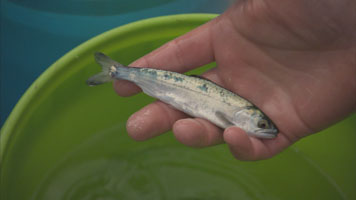
A survey team caught this juvenile chinook salmon in Puget Sound shortly after it left the Nisqually River on its way to the ocean
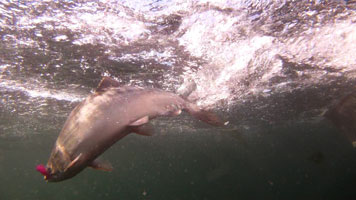
Female pink salmon on Carl Safina’s fishing line in Puget Sound
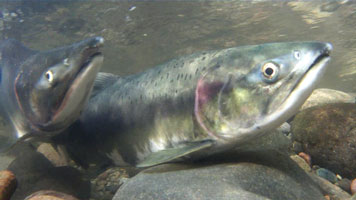
A spawning pair of pink salmon in the Mashel River
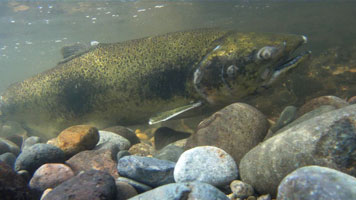
Adult female chinook salmon on spawning grounds in the Mashel River
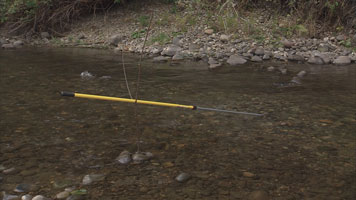
A GoPro miniature underwater camera is recording on the end of the pole, as a chinook salmon approaches from the left

Salmon were mercilessly overfished in the early 20th century. Here men unload salmon into huge bins on a dock at the Seattle waterfront, ca 1900. Washington State Historical Society
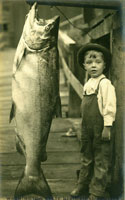
Chinook salmon weighing 76 pounds ca1913. Large salmon were much more common then. Washington State Historical Society
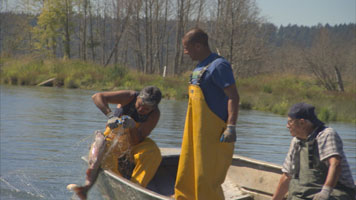
Members of the Nisqually Tribe harvest chinook salmon returning to the river
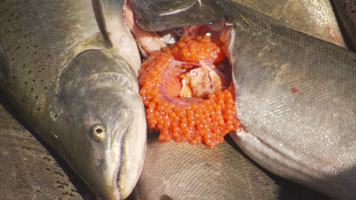
Sometimes seals take a free meal out of the salmon nets. Seals especially like salmon eggs


